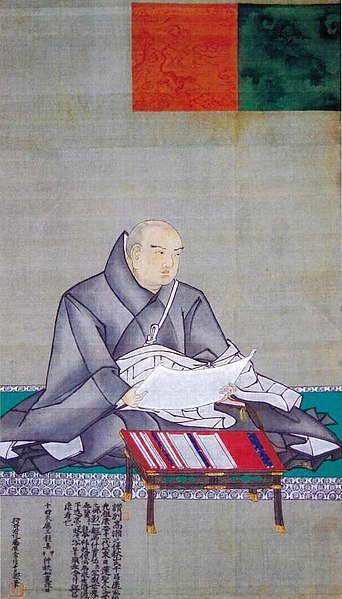Buddhist liturgy is a formalized service of veneration and worship performed within a Buddhist Sangha community in nearly every traditional denomination and sect in the Buddhist world. It is often done one or more times a day and can vary amongst the Theravada, Mahayana, and Vajrayana sects.
Butsudan with enshrined Amida Buddha
Nichiren Shōshū is a branch of Nichiren Buddhism based on the traditionalist teachings of the 13th century Japanese Buddhist priest Nichiren (1222–1282), claiming him as its founder through his senior disciple Nikko Shonin (1246–1333), the founder of Head Temple Taiseki-ji, near Mount Fuji. The lay adherents of the sect are called Hokkeko members. The Enichizan Myohoji Temple in Los Angeles, California serves as the temple headquarters within the United States.
Taiseki-ji Head Temple, Fujinomiya, Shizuoka, Japan
Portrait of Nichiren Daishonin by Japanese artisan Kano Tsunenobu (1636–1713), now preserved at Nichiren Shoshu Honmonji Temple in Mitoyo, Kagawa prefecture. Measuring approximately 40 inches by 22 inches on silk, Edo period.
The current High Priest of the sect, Nichinyo Shonin, during a lecture after the Ushitora Gongyo in 2007.
The Lotus Sutra is the core basis of teachings revered by the Hokkeko sect. A Buddhist sutra book of the Chapter 2 (Skillful Methods), from the Japanese Edo period.





